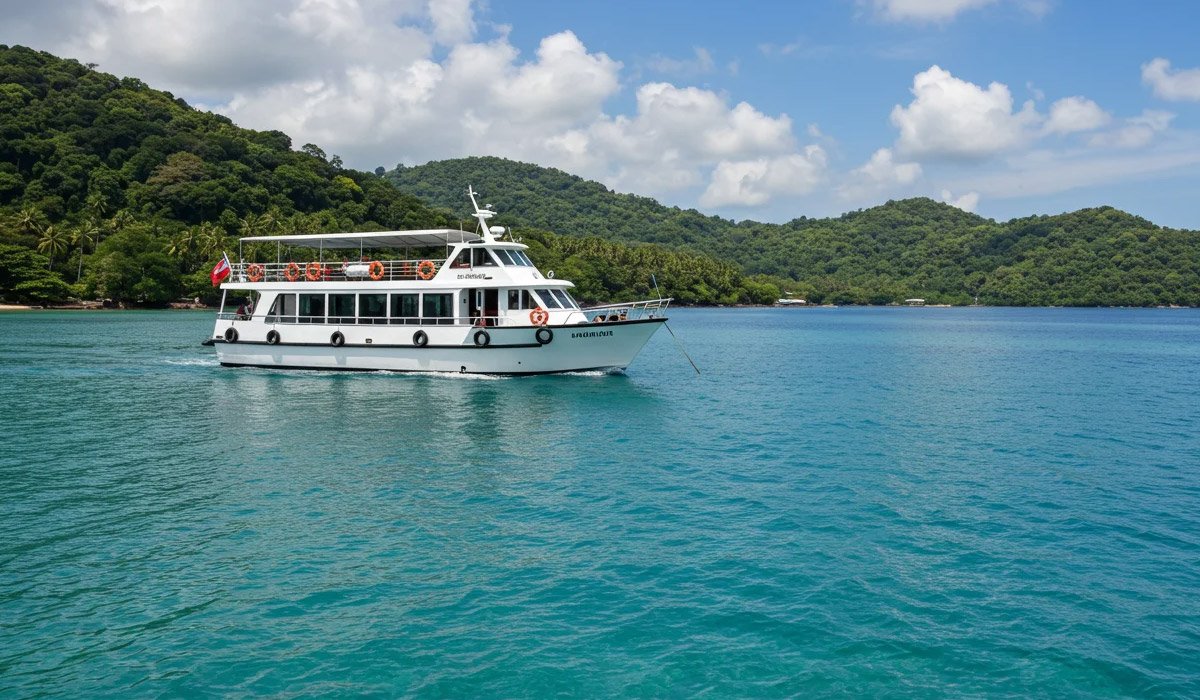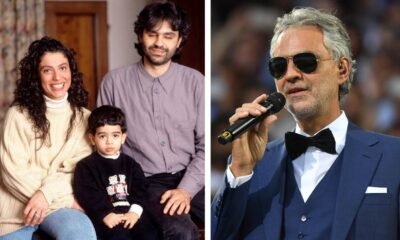Blog
Veneajelu: Ultimate Guide to the Beautiful Finnish Boat Ride Experience

Imagine gliding across a calm Finnish lake as the golden light of the evening sun reflects off the water, the only sounds being gentle ripples against the boat and the distant call of birds settling for the night. This serene scene captures the essence of veneajelu, a uniquely Finnish tradition that translates directly to “boat ride” but carries far deeper meaning within the culture. In Finland, where thousands of lakes, countless rivers, and an endless coastline define the landscape, veneajelu is more than just a pastime—it is a lifestyle, a way to connect with nature, and a cultural expression of relaxation and togetherness.
While the literal translation may sound simple, in practice, veneajelu represents a slow and deliberate approach to life, an opportunity to enjoy water, nature, and companionship at a pace that celebrates the journey rather than the destination. This article explores veneajelu in depth, tracing its cultural roots, exploring its modern forms, and offering insights on destinations, traditions, safety, and sustainability so readers can fully understand why veneajelu is both a heritage and a highlight of Finnish leisure.
Origins and Cultural Roots
The history of veneajelu is tightly bound to Finland’s geographical reality: water is everywhere. With over 188,000 lakes, numerous rivers, and one of the world’s most intricate archipelagos, Finland has relied on boats for millennia. In earlier times, watercraft were essential tools for survival—villagers carved simple dugout canoes or crafted sturdy wooden rowboats to fish, transport goods, and maintain connections with neighboring communities. Before modern infrastructure developed, waterways functioned as highways, and boats were lifelines. Over time, however, as industrialization and roads reduced reliance on boats for everyday transport, the role of boating shifted from necessity to leisure.
Summer cottages, known as mökki, became central to Finnish culture, and alongside them, veneajelu emerged as a symbol of relaxation and family connection. Families used small boats to visit friends, attend gatherings, or simply drift along for pleasure. Symbolically, veneajelu came to represent freedom, heritage, and sisu—the Finnish concept of quiet determination and endurance—expressed in the calm persistence of rowing or navigating waters with respect for nature’s rhythms.
What Is Veneajelu Today?
In contemporary Finland, veneajelu refers to any leisurely boat trip taken for enjoyment rather than necessity. While it still literally means “boat ride,” the cultural context gives it more weight: it implies relaxation, exploration, and closeness to nature. The vessels used for veneajelu vary widely. Some families prefer small rowboats that provide quiet and intimacy with calm lakes, while others enjoy motorboats that allow for quick trips between islands.
Sailing is popular in coastal areas, combining sport with the meditative pace of wind-driven travel. Houseboats cater to longer journeys, offering floating accommodations for multi-day lake explorations. Vintage boat clubs preserve heritage vessels, creating nostalgic trips that connect modern riders with Finland’s maritime history. Today, veneajelu also blends tradition with tourism—guided cruises offer commentary, refreshments, and cultural insights, while eco-friendly boats powered by electricity reflect modern sustainability values. In all its forms, veneajelu remains true to its essence: not about speed, but about savoring the water, the company, and the scenery.
Types of Veneajelu Experiences
Veneajelu can take many forms, depending on the type of boat, setting, and purpose. Each variation offers its own perspective on Finnish waters and traditions.
| Type of Veneajelu | Typical Vessel | Purpose | Ideal Setting |
|---|---|---|---|
| Rowboat Leisure | Wooden or metal rowboat | Quiet reflection, fishing | Small lakes, calm rivers |
| Motorboat Cruise | Outboard/inboard motorboat | Speed, island hopping | Large lakes, archipelagos |
| Sailing Trip | Sailboat or yacht | Sport + relaxation | Coastal waters, open lakes |
| Houseboat Tour | Floating home vessel | Multi-day travel, family trips | Large inland waterways |
| Vintage Boat Ride | Restored wooden boat | Heritage, nostalgia | Historic harbors, city waterfronts |
| Guided Leisure Cruise | Tourist cruise boat | Commentary, snacks, sightseeing | Helsinki, Turku, Saimaa |
| Wildlife/Nature Tour | Electric boat, kayak | Birdwatching, seal spotting | Saimaa, Kolovesi, archipelagos |
| Fishing Trip | Small motorboat with gear | Pike, perch, zander | Lakes and rivers |
| Sunset/Evening Ride | Various vessels | Romantic, scenic enjoyment | Southern Finland in summer |
| Cultural/Historical Cruise | Tour boats | Visiting fortresses, lighthouses | Helsinki, Åland, coastal forts |
These diverse experiences mean veneajelu can be tailored for anyone—families, couples, tourists, or nature enthusiasts.
Seasonal Timing and Traditions
Veneajelu is highly seasonal in Finland, with the main period running from late May to September when waterways are free of ice. The highlight of the summer calendar is Juhannus, or midsummer, when many Finns celebrate at lakeside cottages. A veneajelu is often part of these festivities, with families rowing across lakes at midnight to watch bonfires or simply to enjoy the longest day of the year.
Summer evenings are ideal for peaceful boat rides, with daylight lasting until late at night. Early autumn brings a different charm as colorful leaves reflect off the water and harbors become quieter. While winter freezes most waters, the tradition does not vanish—iceboating and snowmobiling across frozen lakes are seasonal adaptations that keep the spirit alive. Seasonal etiquette often involves coffee breaks (kahvitauko) on islands, berry-picking after boat rides, or simply enjoying a picnic in secluded coves.
Top Destinations for Veneajelu
The beauty of veneajelu is that opportunities exist almost everywhere in Finland, yet some destinations stand out for their scenery and cultural richness.
| Destination | Waterway Type | Notable Features | Best Season |
|---|---|---|---|
| Helsinki Archipelago | Coastal sea | 330 islands, canal cruises, Suomenlinna fortress | Summer |
| Lake Saimaa | Inland lake | Largest lake, home to Saimaa ringed seal, labyrinth islands | Summer |
| Kolovesi National Park | Inland lake | Motor-free zone, ancient rock paintings, birdlife | Summer |
| Archipelago Sea & Åland | Coastal sea | 20,000+ islands, ferries, red granite cliffs | Summer–autumn |
| Lake Päijänne | Inland lake | National park, sandy shores, island trails | Summer |
| Lake Inari (Lapland) | Inland lake | Remote, Sámi culture, midnight sun & northern lights | Summer–early autumn |
Each region offers its own version of veneajelu: urban cruises near Helsinki, peaceful wildlife encounters on Lake Saimaa, silent explorations at Kolovesi, or cultural journeys through Åland’s maritime heritage.
Safety Essentials
While veneajelu is meant to be relaxing, safety is always a priority. Every vessel must have a designated skipper or boatmaster, whether a professional guide or a family member in charge. Finnish regulations require lifejackets or flotation devices for all passengers, and children or non-swimmers should wear them at all times. Boats should carry essential equipment such as a bailer or pump, signaling devices, first aid supplies, and a charged mobile phone or radio.
Weather conditions in Finland can change quickly, so checking forecasts from the Finnish Meteorological Institute before departure is standard practice. Navigating shared waterways requires knowledge of speed limits and right-of-way rules, especially in busy archipelago areas. Alcohol laws also apply strictly on boats; while moderate drinking is common at summer cottages, the skipper must remain sober to ensure safe handling of the vessel.
Sustainability and Environmental Care
Veneajelu offers unforgettable access to nature, but protecting these waters is equally important. Eco-friendly practices are increasingly emphasized in Finland. Electric boats and solar-powered vessels reduce emissions and noise, allowing riders to enjoy silence without disturbing wildlife. Observing no-wake zones helps prevent shoreline erosion, while carrying back all rubbish ensures pristine environments remain intact. Single-use plastics are discouraged, and many riders bring reusable containers and bottles. Respecting wildlife is crucial—whether it’s keeping distance from seals in Saimaa or avoiding nesting sites in archipelagos. These practices align with the Finnish principle of jokamiehenoikeudet or Everyman’s Rights, which grants access to nature but comes with the responsibility of preserving it for others.
Planning a Veneajelu
Planning a veneajelu requires considering boat type, location, season, and safety. For small motorboats under 20 horsepower, no license is required in Finland, making access easy for visitors. Larger yachts or sailboats may require proof of experience or a boating license. Rentals are widely available through platforms such as Click&Boat, Lomarengas, or local marinas, with costs ranging from affordable rowboats at €20–40 per day to luxury yachts at several hundred euros per day. Packing essentials include layered clothing, windproof jackets, sunscreen, hats, waterproof bags, and snacks. Navigation maps or GPS are useful, although many rentals provide digital aids. The best times are late May to early September, with July offering lively harbors and September bringing quieter, reflective rides.
Combining Veneajelu with Other Activities
Veneajelu is often combined with complementary activities that enrich the experience. Fishing is a classic pastime, with locals targeting pike, perch, or zander. Floating saunas offer a quintessentially Finnish combination of water and wellness, often followed by a swim. Island picnics are popular, with families docking at uninhabited spots to grill sausages or brew coffee over open fires. Birdwatching opportunities abound, especially in the archipelago. Photography tours focus on capturing sunsets, wildlife, or reflections across glassy lakes. For adventurous travelers, camping on public islands is permitted under Everyman’s Rights, provided rules are respected. Culinary cruises featuring regional dishes served onboard are a growing trend, merging Finnish food culture with scenic travel.
Cultural Significance and Symbolism
Beyond its recreational value, veneajelu carries cultural weight in Finland. It frequently appears in literature, music, and film as a metaphor for peace, nostalgia, or the passage of time. The act of rowing steadily against waves mirrors the Finnish trait of sisu, embodying calm strength and persistence. Veneajelu also represents intergenerational bonds: grandparents teaching children to row, families sharing stories on the water, or friends gathering after sauna for an evening ride. It is a ritual of connection—between people, nature, and heritage—that reinforces identity and values.
Modern Adaptations
As times change, veneajelu continues to evolve. Eco-conscious Finns are adopting electric boats and digital navigation tools. Tourism operators design themed experiences—photography cruises, seal-watching tours, or sunset dinners. Mobile apps now assist in planning, from booking docking spots to checking live weather. International visitors increasingly seek out veneajelu as an “authentic” Finnish experience, contributing to cultural exchange and local economies. Yet despite these innovations, the heart of veneajelu remains unchanged: it is still about slowing down, being present, and savoring Finland’s water-rich landscapes.
Conclusion
Veneajelu is far more than a simple boat ride—it is a cultural tradition, a recreational activity, and a deeply meaningful way to experience Finland. From historic roots in fishing and trade to its modern expression in leisure cruises and eco-friendly tours, veneajelu reflects the Finnish spirit of harmony with nature.
Whether exploring the urban archipelago of Helsinki, spotting seals in Saimaa, or drifting silently through Kolovesi’s waterways, each ride offers a timeless connection to place and heritage. For locals, it is part of everyday summer life; for visitors, it can become the highlight of a journey to Finland. In every case, veneajelu invites us to step away from fast routines, breathe deeply, and let the water carry us into moments of peace, beauty, and unforgettable memory.
FAQs About Veneajelu
1. What does veneajelu mean in Finnish?
Veneajelu means “boat ride” in Finnish. It describes a relaxing trip on a lake, river, or the sea taken for enjoyment, not for transport.
2. When is the best time for veneajelu in Finland?
The best time for veneajelu is between May and September. Summer offers long daylight hours, while early autumn brings calm waters and colorful scenery.
3. Do I need a license for veneajelu in Finland?
No license is needed for small boats or public cruises. If you rent a large motorboat or yacht, some companies may ask for proof of boating experience or a license.
4. Is wearing a lifejacket required during veneajelu?
Yes. Every passenger must have a lifejacket available, and children or non-swimmers should wear one at all times for safety.
5. What should I bring on a veneajelu trip?
Bring layered clothing, a windproof jacket, sunscreen, snacks, and a waterproof bag for valuables. If you plan to swim, pack swimwear and a towel.
For More Information Visit Coopermagazine
-

 Celebrity1 year ago
Celebrity1 year agoWho Is Jennifer Rauchet?: All You Need To Know About Pete Hegseth’s Wife
-

 Celebrity1 year ago
Celebrity1 year agoWho Is Mindy Jennings?: All You Need To Know About Ken Jennings Wife
-

 Celebrity1 year ago
Celebrity1 year agoWho Is Enrica Cenzatti?: The Untold Story of Andrea Bocelli’s Ex-Wife
-

 Celebrity1 year ago
Celebrity1 year agoWho Is Klarissa Munz: The Untold Story of Freddie Highmore’s Wife
















